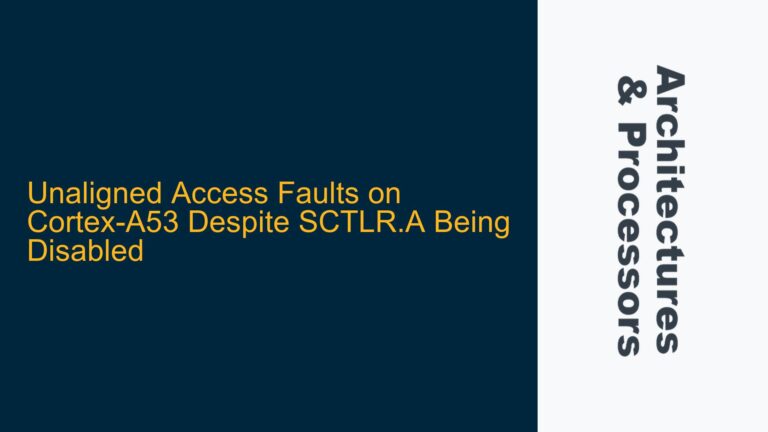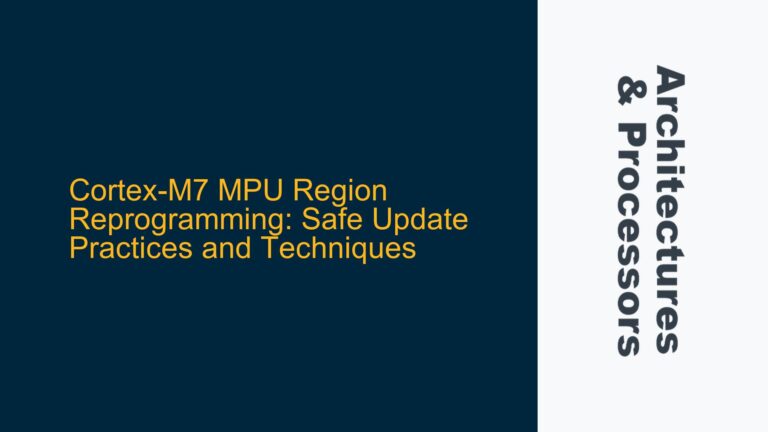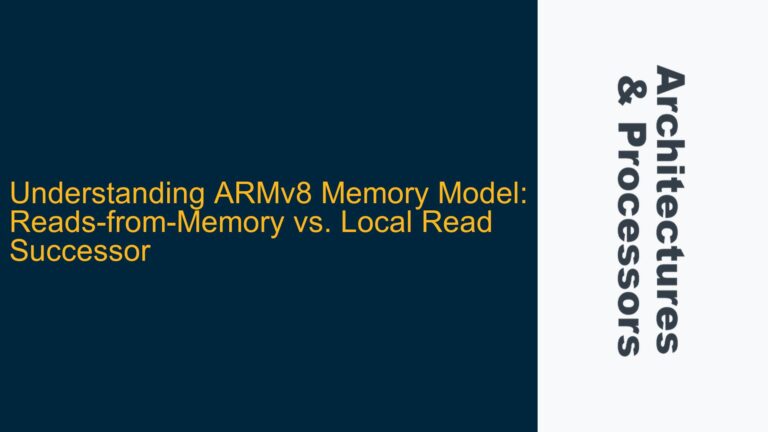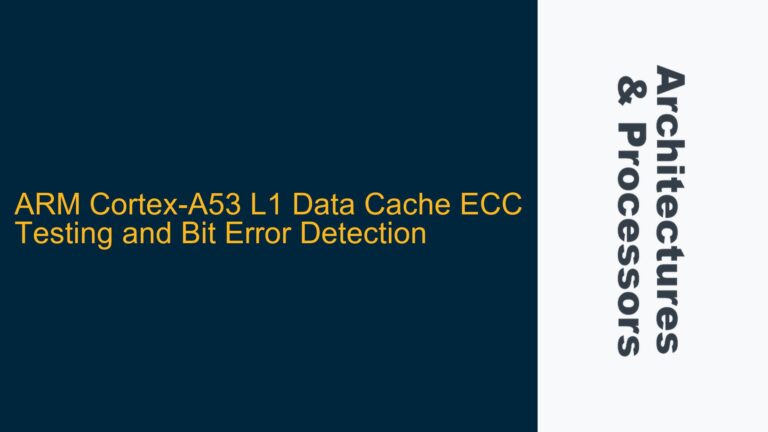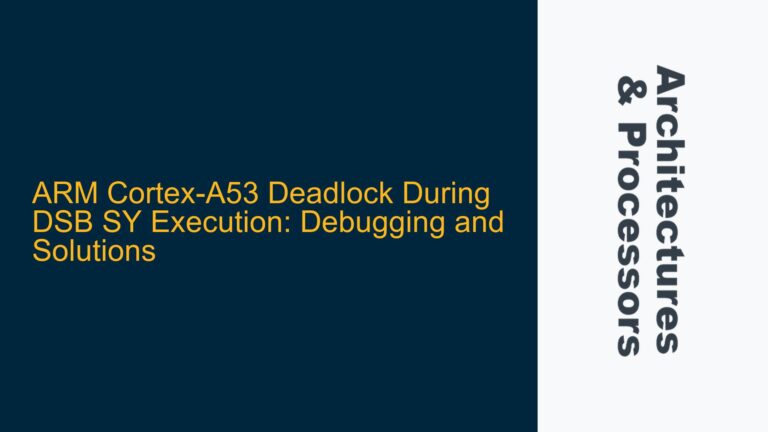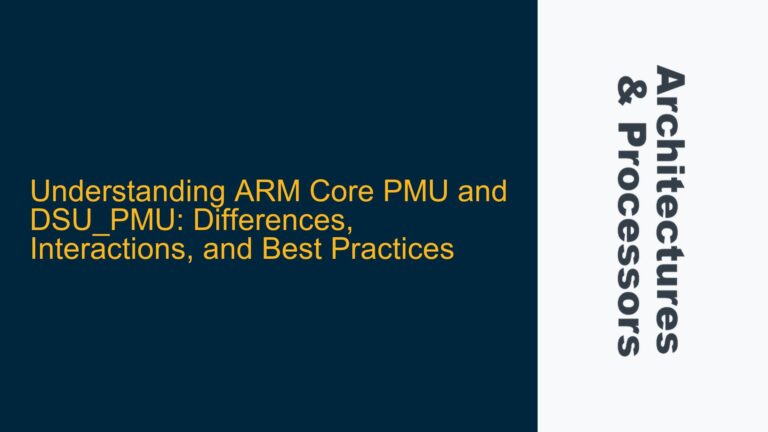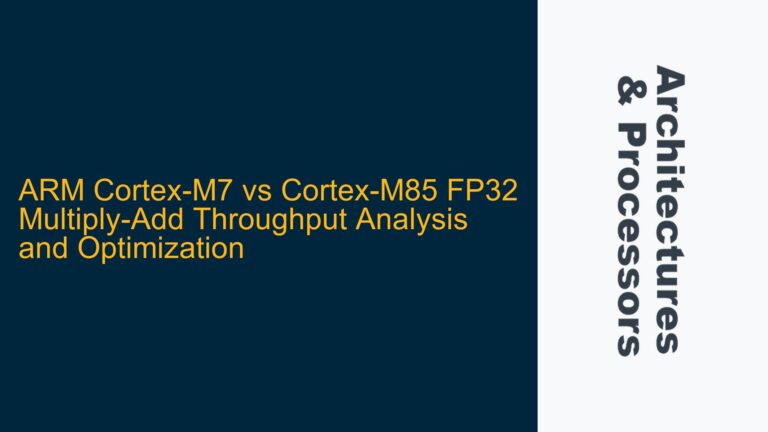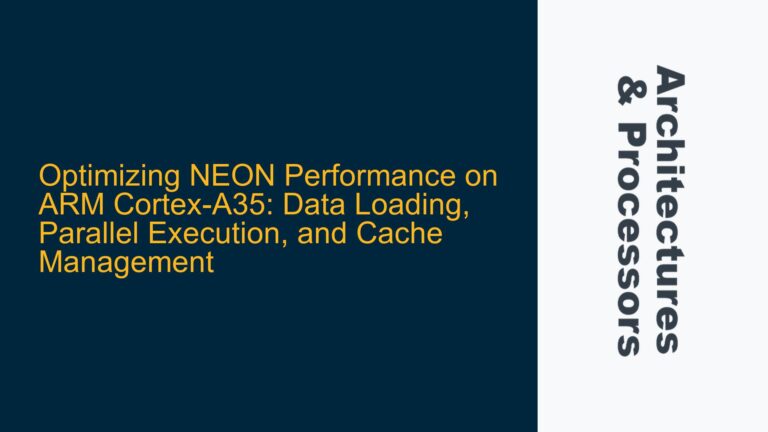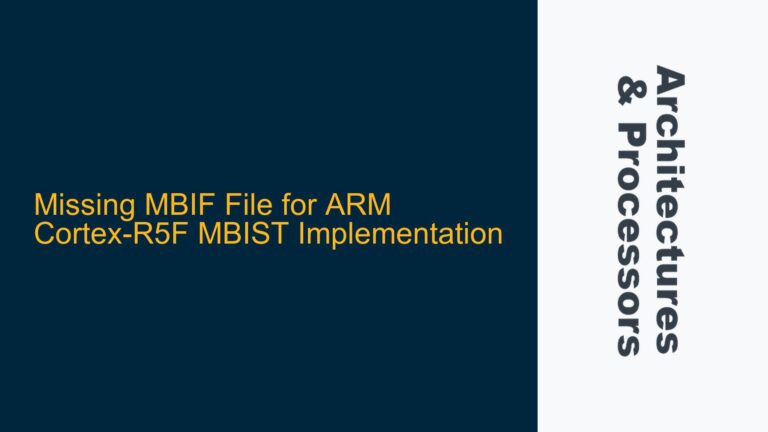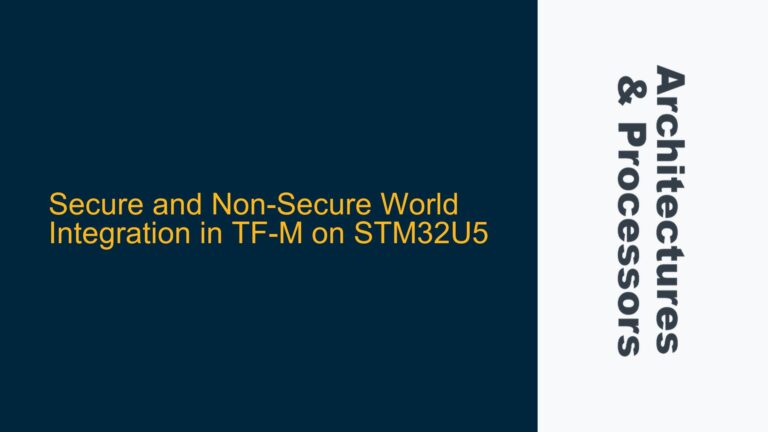Unaligned Access Faults on Cortex-A53 Despite SCTLR.A Being Disabled
Cortex-A53 Unaligned Access Faults with SCTLR.A = 0 in AArch32 Mode The Cortex-A53 processor, a widely used ARMv8-A core, is designed to handle both AArch64 and AArch32 execution states. In AArch32 mode, the processor supports unaligned memory accesses for certain instructions, such as LDR and STR, when the System Control Register (SCTLR) alignment check bit…
